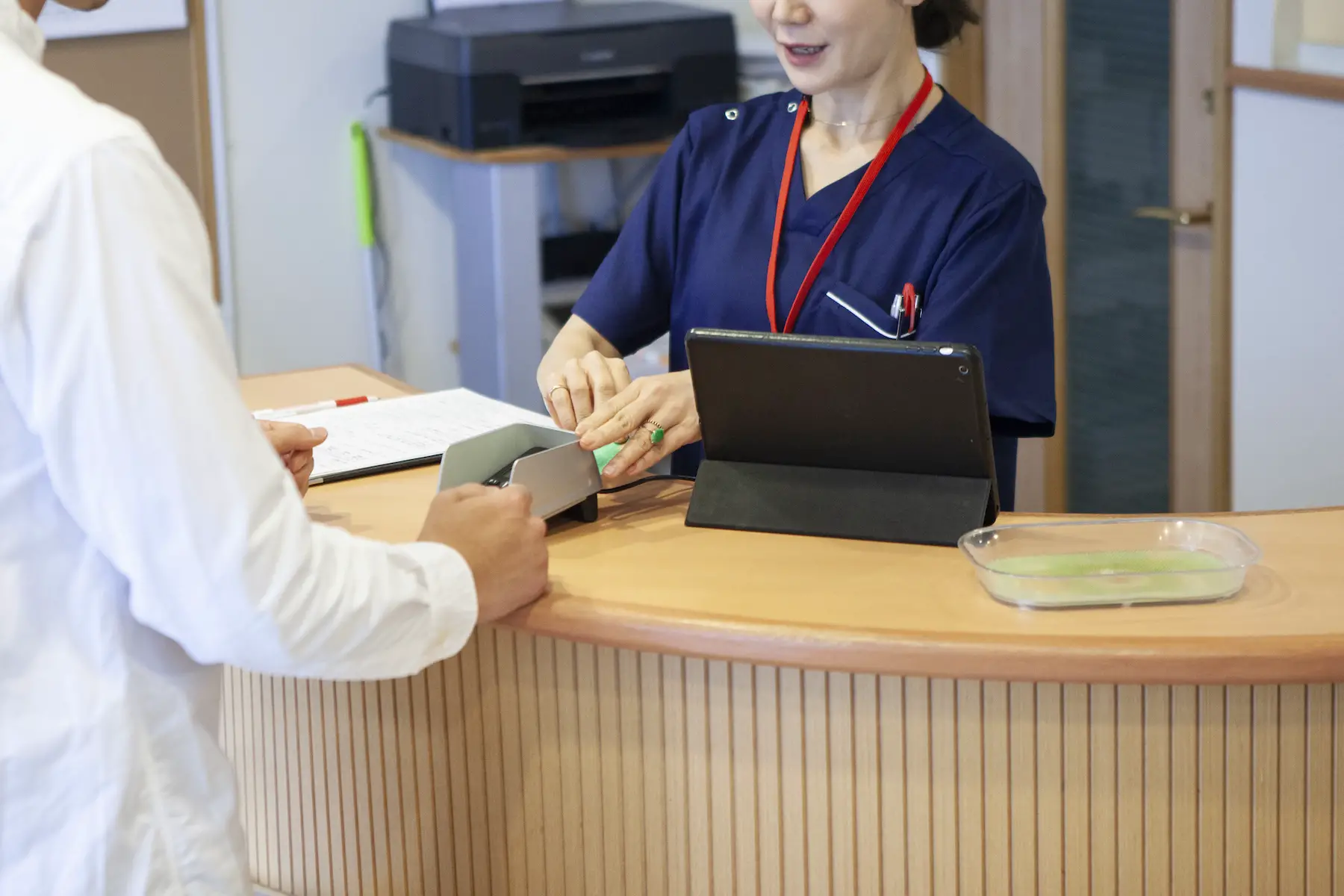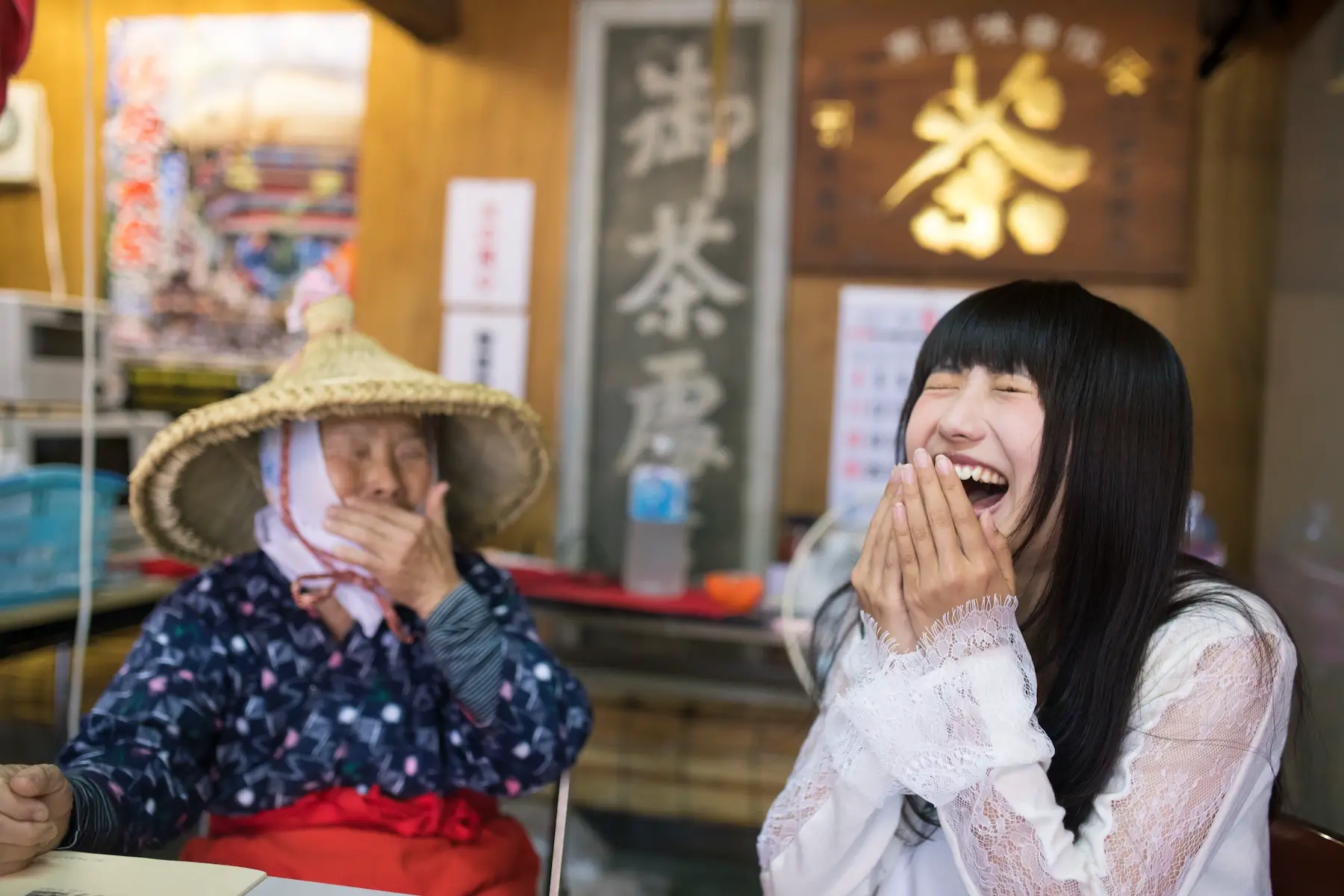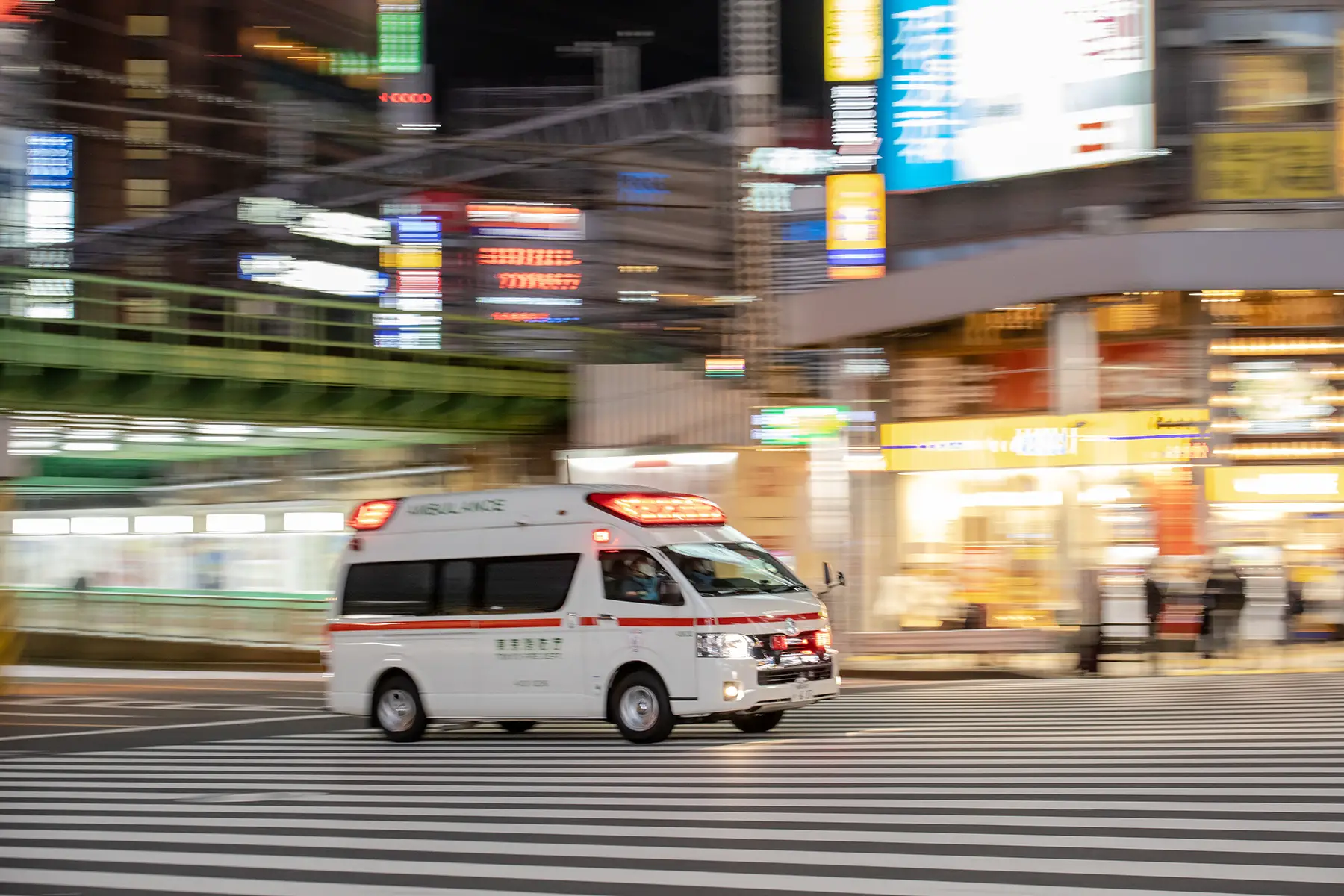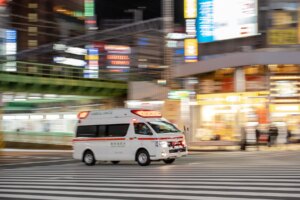If you move to Japan, you won’t have to worry about the quality of healthcare. The country’s affordable insurance-based system covers almost everyone, with services ranging from specialist hospital care to dentistry. All you need to do is register with your local authority.
Learn all about healthcare in Japan, with sections on:
- Overview of Japanese healthcare
- Cost of healthcare in Japan
- Japanese health insurance
- How to register for healthcare in Japan as an expat
- Private healthcare in Japan
- Japanese doctors and specialists
- Women’s healthcare in Japan
- Children’s healthcare in Japan
- Japanese dentistry
- Hospitals in Japan
- Japanese health centers and clinics
- Pharmacies in Japan
- Mental healthcare in Japan
- Japan’s response to COVID-19
- Physical therapy in Japan
- Japanese alternative medicine
- Community-based health and wellbeing in Japan
- What to do in an emergency in Japan
- How to make a complaint about Japanese healthcare
- Useful resources
Cigna Global
Want access to the best private medical services in Japan? Speak to the healthcare professionals at Cigna Global today and find a policy that’s right for you. Take advantage of their global network of doctors, specialists, therapists and more with coverage tailor-made for you and your family. If you’re starting a new life in Japan, get peace of mind with Cigna Global.
Overview of Japanese healthcare
The healthcare system
Japan has had a world-leading universal healthcare system available to all citizens and long-term residents since 1961. It consists of a statutory health insurance (健康保険, kenko hoken) scheme where residents make contributions in return for highly subsidized healthcare, with those unable to contribute receiving free public healthcare through a public assistance program.
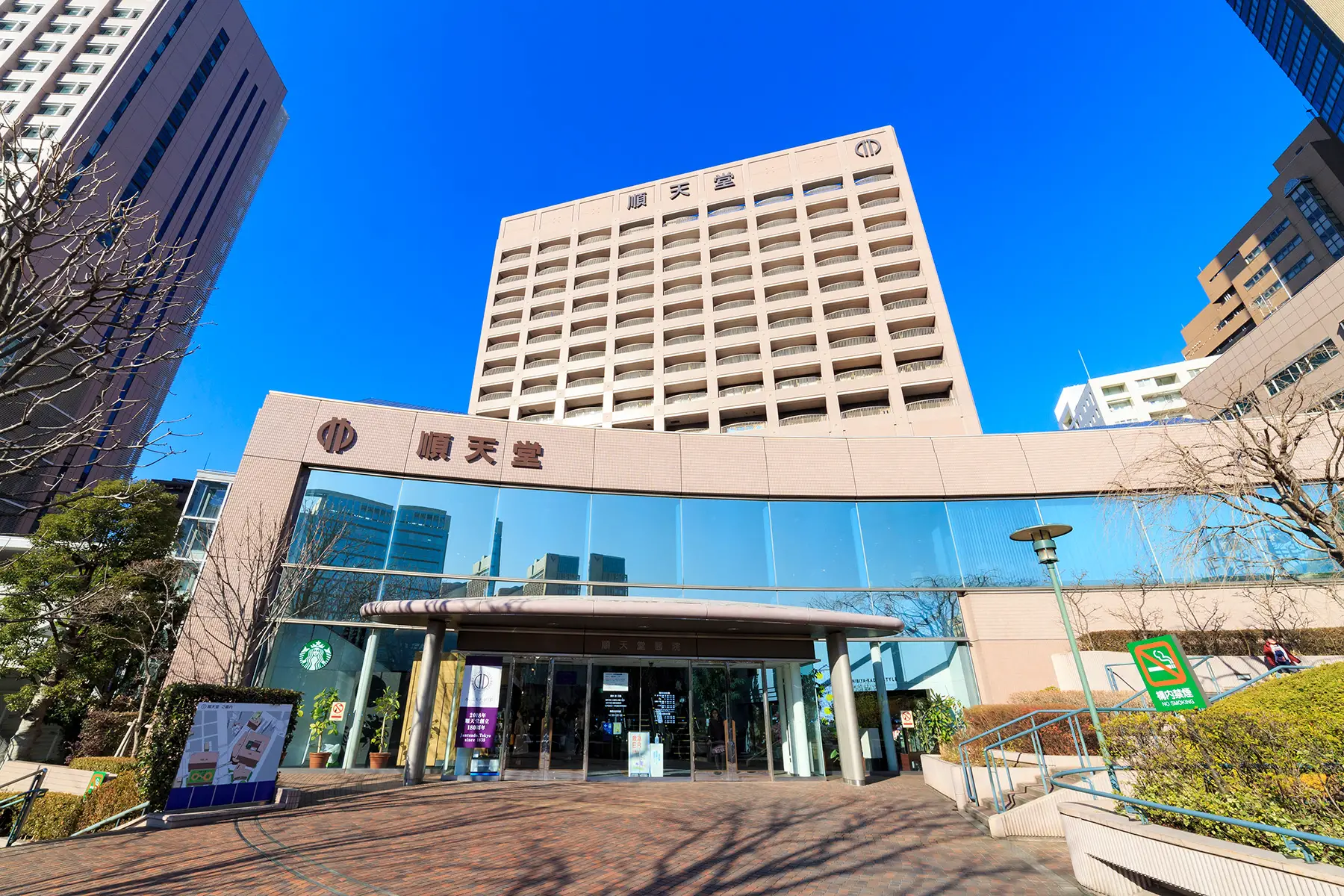
Healthcare in Japan includes public, private, and non-profit providers, most of whom participate in the public insurance scheme. Although coverage is universal and reasonably comprehensive, you can also take out private health insurance to cover full healthcare costs and access medical care not available through the public system.
The Ministry of Health, Labor, and Welfare (MHLW – 厚生労働省, Kose Rodo Sho) is responsible for public healthcare in Japan, overseeing delivery, making policy, and regulating healthcare and insurance costs.
The country’s 47 prefectures implement regional public healthcare plans and manage budgets. At a very local level, over 1,700 municipalities administrate the health insurance scheme and deliver healthcare services.
Japan’s excellent healthcare means the country ranks among the world’s healthiest. It has the highest life expectancy in the world at 84.3 years, according to 2022 statistics from the World Health Organization (WHO). Its healthcare system ranks among the top five in the world, and it places 21st globally in terms of United Nations (UN) Sustainable Development Goals (SDG) outcomes (2016 figures).
Who can access Japanese healthcare?
All Japanese citizens and long-term residents can access the national healthcare system. In other words, anyone who stays in Japan for more than three months. In fact, registering for public health insurance is mandatory for long-term residents.
Short-term visitors to Japan who are in the country for less than three months are not eligible for statutory health insurance. This includes anyone on a short-stay Japanese visa. They must purchase private health insurance (民間医療保険, minkan iryo hoken) to access the country’s medical facilities unless their home nation has a reciprocal healthcare agreement with Japan.
Cost of healthcare in Japan
Japan spends 10.9% of its GDP on healthcare, above the Organization for Economic Cooperation and Development (OECD) average of 9%. Spending is around $4,388 per capita (2020 data), which is reasonably high by global standards.
84% of overall healthcare spending in Japan is publicly financed, comprised of 42% insurance contributions and 42% tax contributions. Out-of-pocket spending covers the remainder, with private health insurance plans meeting most of the costs. Annual out-of-pocket spending in 2019 came to $563 per household.
Statutory health insurance covers around 70% of individual healthcare costs in Japan for most of the population, with residents being responsible for copayment of the remaining 30% of costs.
To keep healthcare affordable, the Japanese government regulates all medical fees, caps the copayment amounts, and offers discounts for low-earning sections of the population. These vary depending on age, income, and regional location. The general copayment limit for most of the population is currently ¥80,100 a month. Certain groups get discounted copayment rates. For example:
- Pre-school children and residents aged 70–74 pay only 20% of most fees
- Older residents aged 75 and over pay only 10% of most fees

In addition, households earning below a certain threshold are eligible for the Public Assistance program (生活保護制度, seikatsu hogo seido) and exempt from insurance contributions and public healthcare payments. These thresholds also vary across prefectures and household size/type.
Japanese health insurance
Japan has a universal public health insurance system that covers nearly all of the population. There are three separate schemes, which are:
- Employment-based health insurance (被用者保険, hiyosha hoken) – for full-time employees of Japanese private companies and public and voluntary organizations.
- National health insurance (国民健康保険, kokumin kenko hoken) – also called “Citizen health insurance,” for residents aged under 75 who are not full-time employees, such as part-time workers, self-employed workers, and students.
- Health insurance for elderly (後期高齢者医療制度, koki koreisha iryo seido) – for those aged 75 and above.
Private health insurance is also available in Japan. You can use this to cover costs not met by public insurance and access anything unavailable through public healthcare. Although it’s not an essential requirement, around 70% of people in Japan have private health insurance coverage. Insurers providing expat-friendly packages in Japan include:
How to register for healthcare in Japan as an expat
How you register for public healthcare in Japan depends on which type of health insurance you qualify for. If you are accessing the employment-based health insurance (EHI) scheme (被用者保険, hiyosha hoken), your employer will usually sort this out for you as soon as you start work. You can register any dependents in your household for coverage with the same scheme, for example, your spouse or children.
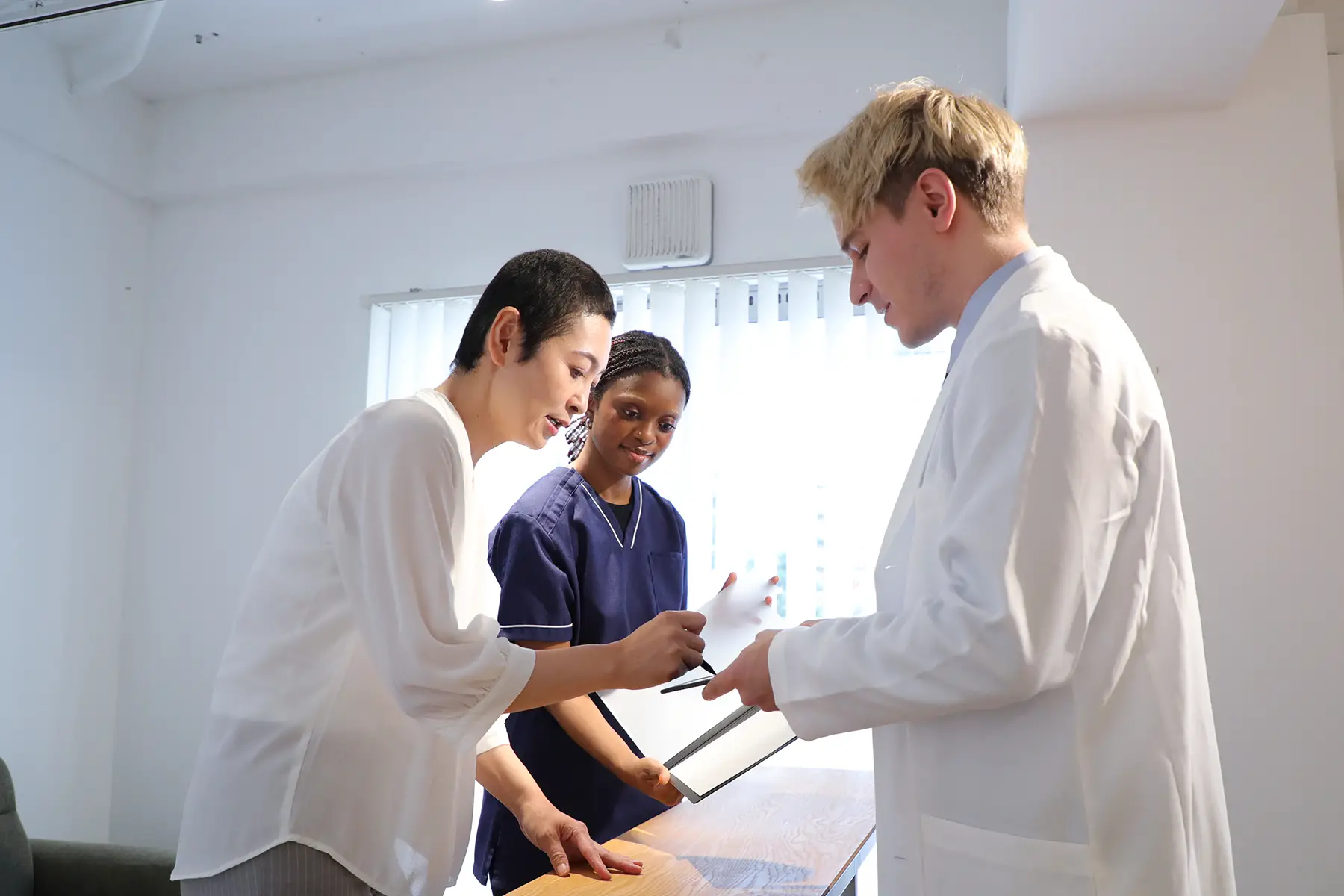
If you qualify for national health insurance (NHI) (国民健康保険, kokumin kenko hoken) or elderly health insurance, you must register at your local municipal office. You should do this within two weeks of arriving in Japan. Documentation to bring along is:
- Valid ID, such as a passport, plus your residence card or Japanese visa
- Details of your address, along with proof if you have it (e.g., a utility bill)
- Your Japanese social security number (個人番号/マイナンバー, kojin bango/mai namba), if you have it
- Proof of income/earnings, as this will determine your insurance payments
For NHI and insurance for elderly residents, only one person per household needs to register. However, you must provide details for all household members as your insurance payment rates are based on household income. You will need to re-register if you move to a new prefecture in Japan.
Once you have registered for Japanese healthcare, you should receive a health insurance card (保険証, hoken sho) which you should bring to appointments.
Private healthcare in Japan
Most healthcare providers in Japan operate as private sector businesses, although they are generally accessible through the public health insurance scheme. The rest are either public sector or non-profit. Around 83% of clinics and 70% of hospitals (病院, byoin) are privately owned, and many doctors (医師, ishi) and specialists are self-employed.

What might be called the Japanese private healthcare sector (medical care that statutory insurance doesn’t cover) is very small compared to many other countries. It includes some specialist treatments, some mental healthcare, specialist dental treatment, some eye care, and cosmetic treatments.
You can access anything not covered by public insurance with a private insurance policy.
Japanese doctors and specialists
Japan has 2.6 doctors per 1,000 people, below the OECD average (2021 figures). However, doctors in Japan are very accessible, and the country has one of the highest consultation rates in the world.
Primary healthcare in Japan differs from many other countries – you generally don’t register with an individual doctor or general practice. Instead, most Japanese doctors work in clinics. Many clinics operate on a walk-in basis, keeping pre-booked appointments to a minimum. Because of this, you often see a different doctor for each visit in Japan.
Medical specialists in Japan are also very accessible. They mostly work in clinics and hospitals. You don’t need a doctor referral to see a specialist in Japan and can request a session with one at a walk-in appointment in many clinics. However, you may have to wait a long time if none are free.
There are many specialisms in Japan including cardiology, oncology, gynecology, psychiatry, and radiology.
Women’s healthcare in Japan
Women in Japan can see gynecologists through the public health insurance program. These specialists work out of clinics, hospitals, and sexual health centers. Maternity care is covered through the public system.
However, funding is slightly different. Expectant mothers receive a lump sum payment in vouchers that they can spend on prenatal, post-natal, and birthing costs. Children are generally born in general hospitals, maternity hospitals, and birthing centers.

Beyond routine checkups and maternity costs, not much of healthcare specific to women is covered through statutory insurance.
Sexual healthcare is generally covered when accessed through a referral, but birth control costs have to be paid out-of-pocket or through private insurance. This includes:
- Condoms
- Birth control pills
- Spermicides
- Intrauterine devices (IUDs)
Diaphragms and hormonal implants are not commonly available in Japan. Low reimbursement rates may explain the low contraceptive usage rates in Japan.
Abortion (中絶, chuzetsu) has been legal in Japan since 1948. However, married women need to get spousal consent, and abortions are difficult to access after ten weeks of pregnancy. They can be carried out up to 22 weeks in cases of rape, health risks to the pregnant woman, or severe economic hardship.
Public insurance doesn’t cover abortion costs, so you can expect to pay between ¥100,000–200,000 without private insurance.
Public healthcare in Japan doesn’t include cancer screenings or the human papillomavirus (HPV) vaccine, although low earners can access these for free. Statutory insurance doesn’t cover any fertility treatments in Japan.
Children’s healthcare in Japan
Children can access public healthcare in Japan through their parent’s insurance. This includes doctors, pediatricians, and specialist treatment. The statutory insurance scheme in Japan covers 80% of healthcare costs for preschool-age children (those under six) and then drops to the regular 70% coverage.
However, prefectures in Japan offer free medical care certificates for children, which essentially cover the copayment until the child reaches 15. You can get these from your local municipal office.

The free scheme provides coupons for pediatric checkups and routine vaccinations (予防接種, yobo sesshu). Voluntary vaccines and some specialist treatments are not covered.
The quality of children’s healthcare in Japan is very high. Infant mortality rates are very low, at just 2 per 100,000 live births. There are 119 nursing and midwifery staff per 10,000 people, which is above average.
Japanese dentistry
Like much healthcare in Japan, dental care is of a high standard. There are eight dentists per 10,000 people in Japan, which is above average. Most dentists (歯科医師, shika ishi) work out of specialist dental clinics.
The good news is that statutory health insurance covers most essential dental treatments in Japan. This usually includes checkups, fillings, crowns, and root canal work. However, work such as implants, braces, and cosmetic treatment is generally excluded. You should check coverage and likely costs with your dentist before commencing treatment.
Unlike doctors, you usually need to make an appointment to see a Japanese dentist.
Hospitals in Japan
There are nearly 8,500 hospitals and around 13 beds per 1,000 residents in Japan, one of the highest rates in the world. Japanese hospitals provide a fairly comprehensive range of healthcare. You can find private, public, and non-profit hospitals across the country. These include general hospitals, research hospitals, psychiatric hospitals, children’s hospitals, and specialist hospitals.
Most general hospitals provide in-patient and outpatient treatment, maternity care, specialist treatment, and emergency care.
You can access hospital treatment in Japan without a referral. However, in these cases, the public insurance scheme may not cover your care.
Japanese health centers and clinics
Clinics are Japan’s main primary healthcare facilities. Here, you will find many doctors and specialists providing public healthcare services. The main distinction between a hospital and a clinic in Japan is that clinics are smaller, usually with fewer than 20 beds.
Similar to hospitals, clinics provide both in-patient and outpatient services. According to 2015 statistics, there are 7,961 in-patient clinics and 93,034 outpatient clinics in Japan.
In addition to general clinics, you can also find many specialist ones. They might offer sexual health or pediatric services, for example. Provision varies across the Japanese prefectures. You can search for public facilities on the MHLW website.
Pharmacies in Japan
If you receive a prescription in Japan, you can pick it up from a local pharmacy (薬局, yakkyoku). You can find these all over Japan and they provide prescriptions, offer healthcare advice, and sell over-the-counter medicines.
Prescription drugs in Japan are discounted through the statutory insurance scheme, so you will generally only need to pay the 30% copayment. The MHLW regulates all prices through the Central Social Insurance Medical Council.
Drug quality is regulated by the Pharmaceuticals and Medical Devices Agency (PMDA). There are nearly 16,000 licensed drugs in Japan.
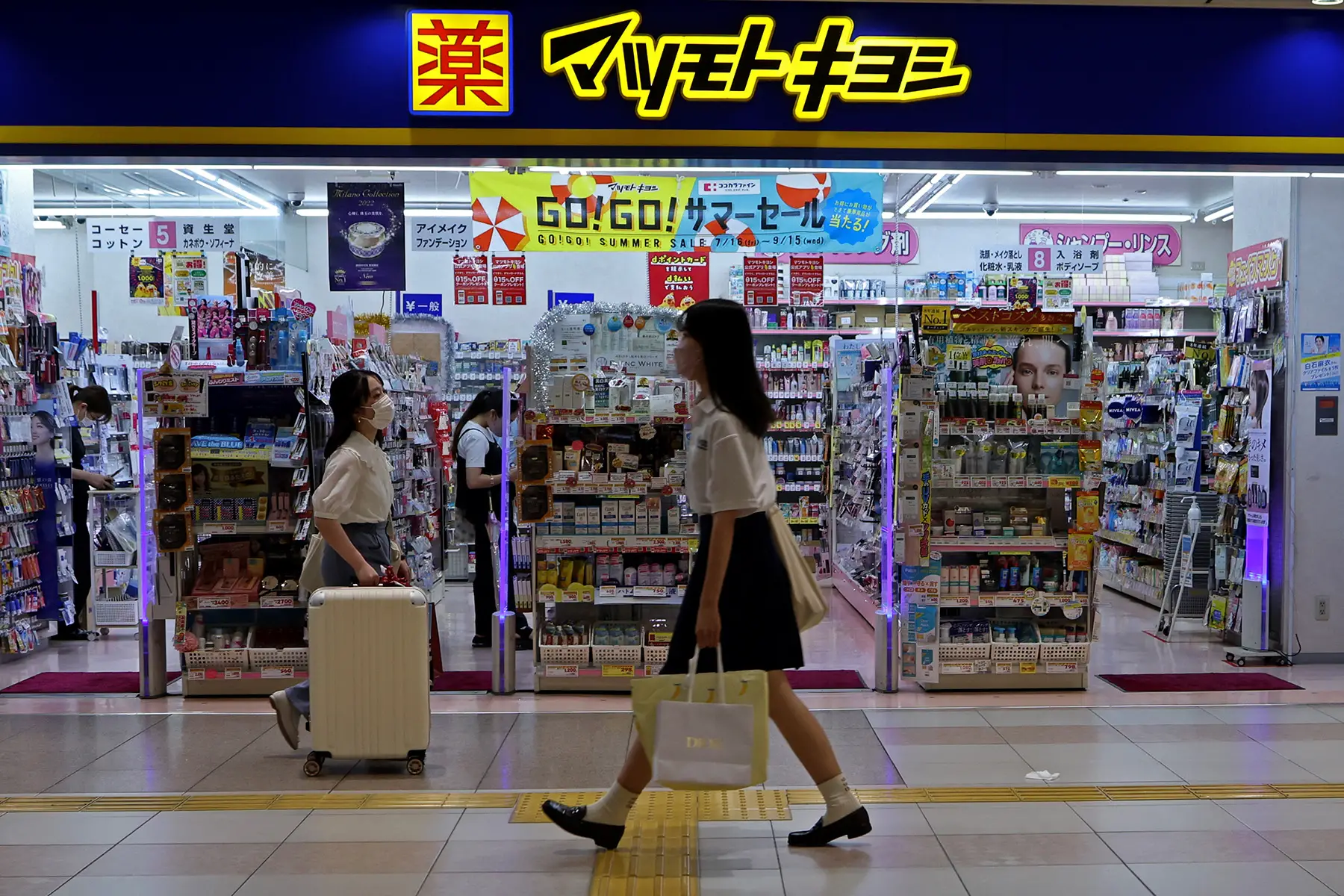
Pharmacies are generally open from 09:00–18:00, although you can also find out-of-hours facilities. In addition to pharmacies, you can also find drugstores in Japan that sell over-the-counter medication. Your municipal authority should be able to provide information on local pharmacies and drugstores.
Mental healthcare in Japan
Although the standard of healthcare in Japan is generally high, mental healthcare provision lags behind (PDF) services for physical health. Statutory insurance coverage is limited and generally only extends to some therapy, medication, and rehabilitative activities for those with serious mental health issues.
Public insurance covers psychiatric therapy sessions in clinics and hospital sessions. However, psychotherapy and counseling from clinical psychologists are not covered, so you will need to pay for this or include it on a private insurance plan.
Japan has a high suicide rate of 15.7 deaths per 100,000 people, well above the average of 8.7 for the Western Pacific region.
Japan’s response to COVID-19
Like most of the world, Japan suffered the effects of the COVID-19 pandemic from 2020 onwards. To date, there have been over 33 million coronavirus cases and over 74,500 deaths in Japan (October 2023). Globally, It ranks eighth for total COVID-19 cases and 21st for total deaths.
The Japanese government responded to the outbreak with several measures, including border controls, national lockdowns, compulsory mask-wearing, a testing and tracing program, and a vaccine rollout.
Most measures have now been lifted. Mask-wearing became voluntary in March 2023. Those who test positive or display symptoms should stay home for seven days. To enter Japan, you no longer need a vaccine certificate or a pre-departure test.
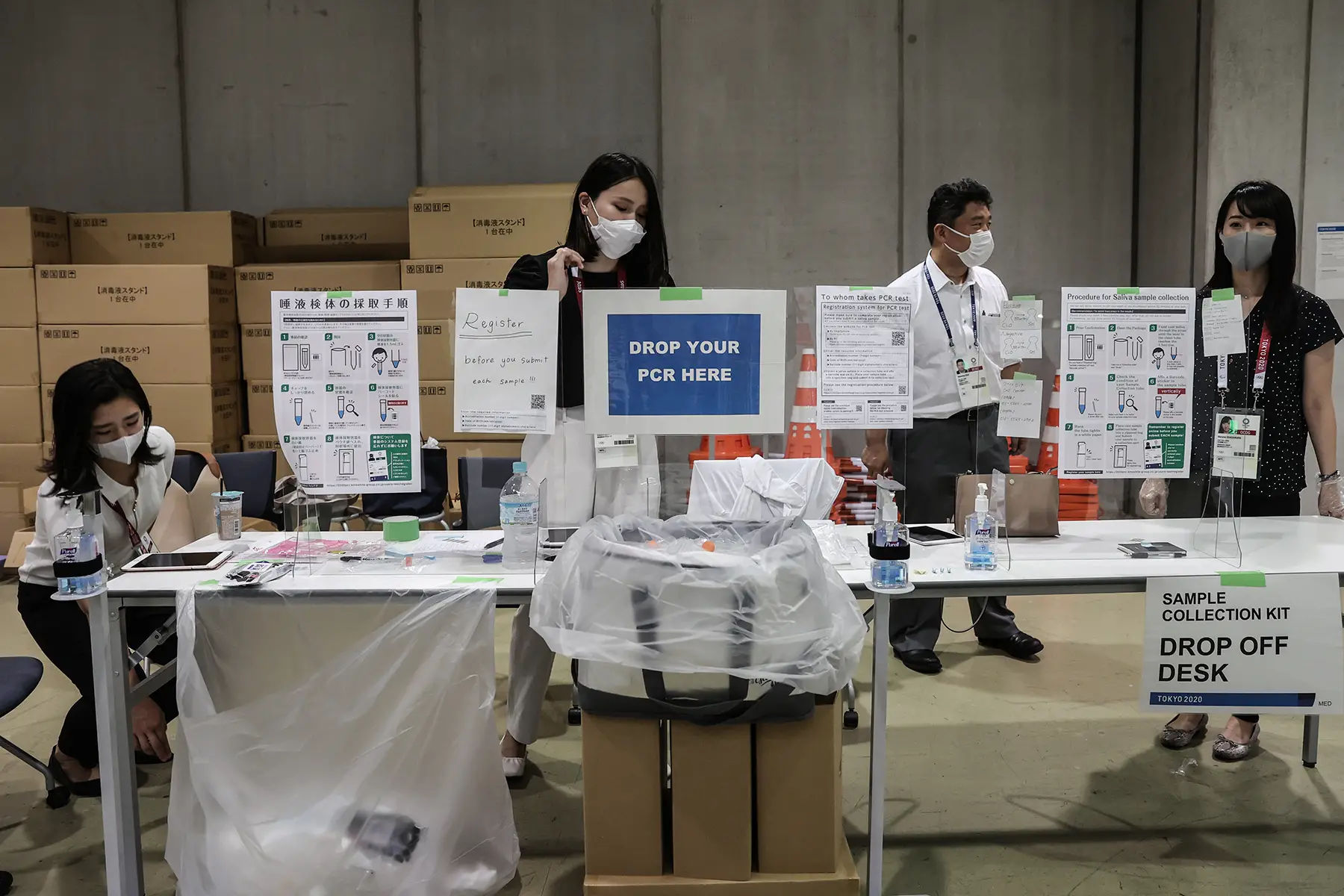
The COVID-19 vaccine is available to all Japanese residents aged five and above. To date, 80% of the population has had two doses, and 67.5% has had a booster.
You can find up-to-date COVID-19 information on the MHLW and Japanese government websites.
Long COVID support
Many people who contract COVID-19 experience ongoing after-effects once the virus has passed, known as long covid. Symptoms can include fatigue, loss of taste/smell, body aches, sleeplessness, concentration difficulties, depression, and even hair loss.
Research has shown that over half of people who have had the virus worldwide could still experience symptoms six months later. Surveys in Japan have revealed that 5.2% of those infected had ongoing symptoms after one month. Another study found that over half of those hospitalized with COVID-19 suffered symptoms one year later.
Japan’s response to Long COVID has been patchy. COVID aftercare clinics have been set up to support those with long-term problems. However, only around 40% of prefectures have these centers in place. If you experience long-term coronavirus symptoms in Japan, you should visit a doctor first. They will refer you for additional support or treatment if necessary. Other support networks include:
- Long Covid Japan support group on Facebook
- Survivor Corps international support group for long covid sufferers worldwide
- Local COVID-19 call centers (in Japanese) in each of the Japanese prefectures
It is worth noting that Long COVID also affects children who have had the virus. One study of Long COVID patients found that 11.9% were aged 11–18. If your child experiences long-lasting symptoms, you can contact a pediatrician at a health clinic for support in addition to using the above resources.
The Japanese government has issued a booklet of Long COVID guidelines (PDF in Japanese).
Physical therapy in Japan
You can access physical therapy through Japan’s public health system, but you’ll usually need a doctor’s referral (紹介状, shokai jo). Otherwise, you will have to pay for sessions or cover them with private insurance. Prices depend on what treatment you require.
Physiotherapists in Japan work in both hospital and clinic settings. To become a physical therapist in Japan, you must have a Japanese qualification or take a national exam (in Japanese). Most specialists in this field belong to the Japanese Physical Therapy Association (JPTA), which has over 100,000 members. Specialist physical therapy fields include:
- Cardiorespiratory therapy
- Palliative therapy
- Musculoskeletal therapy
- Occupational therapy
- Geriatric therapy
- Pediatric therapy
- Sports therapy
To find a physical therapist in Japan, contact your local prefectural health authority.
Japanese alternative medicine
Japan has a history of using complementary and alternative medicines (CAM) to remedy health complaints. These include:
- Kampo medicines (traditional Japanese herbal medicines)
- Acupuncture
- Moxibustion
- Massage therapy
- Reiki
CAM is available through public health insurance if a doctor prescribes it. The insurance scheme will cover you for 148 kampo medicines, and they are also available over-the-counter. All medicines and devices used in treatments are regulated by the PMDA.

If you cannot get CAM through the public healthcare system, expect to pay around the following amounts if you don’t have private insurance coverage:
- Kampo medicines – ¥500–4,000
- Acupuncture/moxibustion – ¥5,000–8,000
- Reiki – ¥5,000–9,000 per session
Community-based health and wellbeing in Japan
Community-based preventative healthcare activities in Japan are done largely at the prefectural and municipal levels. These may include healthy eating, arts and crafts, and gardening projects. You can check what’s available in your local area through your local municipal office or prefectural website.
What to do in an emergency in Japan
If you have a medical emergency in Japan, you should call 119, which will connect you to the service that can send you an ambulance (救急車, kyukyu sha). Major hospitals in Japan have 24-hour emergency wards. However, smaller hospitals, clinics, and most specialist health centers only operate during working hours and usually close sometime from 17:00–20:00.
Hospitals provide emergency treatment for free in Japan regardless of insurance status. However, if you do not have adequate health insurance – either public or private – then you may receive a bill for treatment.
How to make a complaint about Japanese healthcare
If you would like to make a complaint regarding healthcare in Japan, for example, if you are unhappy with the treatment or feel that you have been unfairly denied healthcare, you should contact your provider or center directly. They may be able to resolve the matter through their complaints or human resources (HR) team.
The next step is to contact your local Medical Safety Support Center (MSSC) (医療安全支援センター, Iryo Anzen Shien Senta). The 2007 Medical Care Act required all prefectures and cities with public health centers in Japan to set up an MSSC to deal with patient concerns and complaints. The MSSC will be able to mediate between you and the healthcare provider, advise on what action to take, and escalate the matter to either the MHLW or the courts if necessary.
You can look for details of your local MSSC on your local prefectural healthcare website.
Useful resources
- Ministry of Health, Labor, and Welfare (MHLW) – government department responsible for healthcare in Japan
- List of prefectural healthcare websites – MHLW links to the 47 local websites (some in Japanese)
- Pharmaceuticals and Medical Devices Agency (PMDA) – regulates pharmaceuticals and medical devices for quality and safety
- Japan Health Policy NOW – information on the Japanese healthcare system and policies
- Japan Healthcare System profile on the Commonwealth Fund website
- WHO 2022 healthcare statistics where you can compare Japan with other countries
- OECD healthcare statistics for Japan


